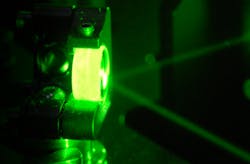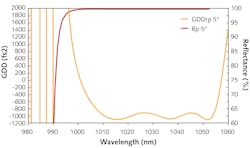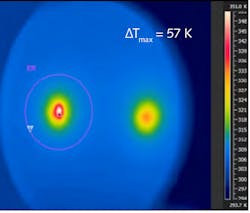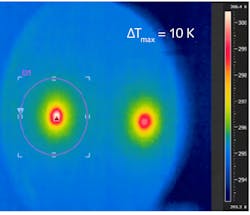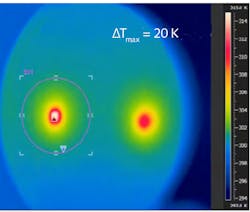Combatting thermal lensing in high-power ultrafast laser systems
Ultrafast laser systems can be found in materials processing applications as well as medical lasers, semiconductor inspection, and nonlinear imaging and microscopy. These applications push ultrafast lasers toward higher and higher powers, although this technology is especially sensitive to thermal effects such as thermal lensing.
Heat can build up and cause gain media and intracavity optics to experience a refractive index gradient and even deform. These effects hinder the performance of ultrafast systems and can also make it impossible for them to mode-lock and produce pulses. Additionally, thermal lensing causes astigmatism in laser cavities. However, new highly dispersive intracavity mirror coatings minimize thermal effects. These advancements can create intracavity optics with negligible thermal effects, facilitating top-of-the-line ultrafast laser systems.
These types of systems also benefit external optics used outside of the laser cavity, such as those in high-energy ultrafast oscillators and amplifiers. External dispersive mirrors with thermal lensing-limiting technology offer a high degree of control over beam stability and pulse compression while minimizing detrimental thermal effects (see Fig. 1).
Thermal lensing
Thermal lensing limits the beam quality and power output of laser systems, particularly those operating at high powers. For ultrafast laser systems, these effects can ultimately lead to system failure by preventing the device from mode-locking to generate laser pulses. Ultrafast lasers operate in continuous-wave (CW) mode for cavity alignment. The lasers are then switched to a pulsed configuration for actual use, but thermal lensing may prevent mode-locking and pulse generation in this configuration.
Thermal lensing can misalign laser cavities, produce unwanted laser modes, cause beam pointing to drift, and cause astigmatism in the laser cavity. All of these effects contribute to unpredictable and diminished final system performance and could prevent ultrafast lasers from achieving higher powers. Thermally induced expansion as a result of heat buildup may also deform optical components, changing the radii of curvature of mirrors. This deformation shifts the focus position of those mirrors, which can potentially prevent the ultrafast system from mode-locking due to cavity misalignment.
The inability to produce pulsed beams renders ultrafast lasers useless. While there are not many available actions that can be done to manipulate the inherent thermal properties of gain media and optical component substrates, an opportunity exists for carefully choosing the proper dispersive mirror coatings to prevent thermal lensing.
Specialized highly dispersive mirrors
Advancements in dielectric coating design have recently enabled the development of highly dispersive ultrafast mirrors that maintain high reflectiveness and desired pulse compression while exhibiting negligible thermal effects. This combination of specifications is attained through careful manipulation of the various process parameters during coating deposition. While minimizing thermal stability is important, this cannot come at the cost of high reflectivity and a sufficiently negative group delay dispersion (GDD). Most optical media exhibit a positive GDD, so the negative GDD of dispersive mirrors is needed to compensate for this and compress pulses to the pulse duration demanded by a particular application.
Figure 2 displays the reflectivity and GDD of a 1030 nm highly dispersive mirror featuring a novel thermal lensing-reducing coating. This new coating technology is beneficial for high-power, solid-state ultrafast lasers such as Yb:YAG, thulium, and holmium laser systems.Testing for thermal performance
These novel dispersive mirror coatings were tested to determine the level of thermal lensing present. The temperature of intracavity dispersive mirrors inside a Yb:YAG thin-disk laser was measured using an infrared camera (FLIR SC305). The laser was tested in CW operation, as this is how the laser behaves before mode-locking can be achieved. A standard highly reflective mirror featuring a GDD of -3000 fs2, but not thermal lensing-reducing coatings, exhibited a rise in temperature of >50 K (see Fig. 3). This temperature change resulted in a deterioration of oscillator stability and a change in the emitted laser modes.REFERENCE
1. O. Pronin, “Towards a compact thin-disk-based femtosecond XUV source,” Dissertation an der Fakultät für Physik der Ludwig–Maximilians–Universität (2012).
About the Author
Tony Karam
Product Line Manager of Laser Optics, Edmund Optics
Tony Karam is Product Line Manager of Laser Optics at Edmund Optics (Barrington, NJ).
Vladimir Pervak
Head of Optical Coatings, UltraFast Innovations
Vladimir Pervak is Head of Optical Coatings at UltraFast Innovations (Garching, Germany).
